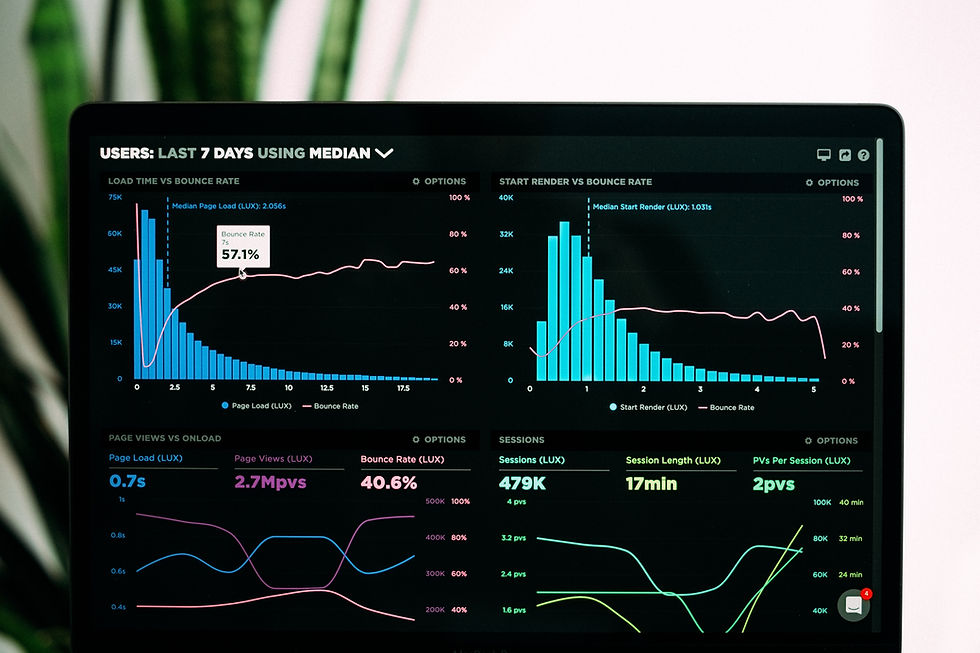8 Essential Tools for Conducting Market Analysis in the Digital Age
- Retha Fraser

- May 1, 2023
- 4 min read
Introduction to Market Analysis
Market analysis entails the collection, organization, and examination of information about a specific market. This process is crucial for determining market size, growth rate, and structure, including the number of buyers and sellers.

Market analysis also aids in understanding how a product fits into the broader landscape by examining the strategies of other companies in the same space.
Market research is a vital component of the business decision-making process, as it provides insights into customer preferences for products or services.

For instance, if a new product line for dogs is being launched but there is no existing demand or customers are seeking something entirely different, it is prudent to conduct market research to determine if there is an actual demand among consumers before investing resources into further development.
In this article, we will delve into 8 different tools that business analysts can use to conduct market analysis.
Data Collection Tools
Data collection tools are indispensable for business analysts, as they streamline the process of gathering accurate and relevant information from various sources. Utilizing methods such as surveys, interviews, and website analytics, these tools allow analysts to compile data representing the current state of a business or market.
This information serves as the basis for further analysis, enabling business analysts to identify trends, patterns, and opportunities that can be used to make informed decisions, optimize processes, and drive business growth and success.
Data Analysis Tools
Data analysis tools are integral to the daily tasks of business analysts, as they help convert raw data into meaningful insights. By employing techniques such as data visualization, statistical analysis, and predictive modeling, business analysts can identify trends, patterns, and correlations within the data.
These insights can then be used to drive informed decision-making, improve operational efficiency, and ultimately enhance the overall performance of a business.

Customer Relationship Management Tools
Customer Relationship Management (CRM) tools are essential for maintaining an organized record of contacts and leads. These tools help build a database of all customers, prospects, and leads, while also tracking their activity on social media for more effective engagement.
CRM tools automate emails, ensuring they are sent out at the appropriate time and in the right manner, saving time when communicating with customers and personalizing each message according to the recipient.
Competitor Analysis Tools
Competitor analysis tools are invaluable resources for business analysts, as they facilitate the systematic evaluation of rival companies' strengths and weaknesses within a given market. By using these tools, analysts can gather data on competitors' product offerings, pricing strategies, marketing tactics, and overall performance.
This information is crucial for conducting market analysis, as it helps business analysts identify opportunities, threats, and areas for improvement. Equipped with these insights, businesses can make strategic decisions to differentiate themselves from competitors, optimize their operations, and ultimately gain a competitive edge in the market.
Several tools can assist with competitor analysis, including competitive intelligence software, market research software, and keyword research tools. These tools help track competitors' activities, monitor their content marketing strategies, and provide data on the keywords people use when searching for products or services similar to yours.

Social Media Analysis Tools
Social media listening tools enable the tracking and examination of social media content, assisting in the identification of trends, influencers, and customer feedback. Social Media Analytics Tools deliver valuable insights into audience behavior across platforms such as Facebook, Twitter, and Instagram, helping users gauge campaign performance, pinpoint the most effective content for each audience segment, and uncover growth opportunities in terms of reach or engagement metrics (e.g., likes and comments).
Sentiment Analysis Tools facilitate the measurement of public sentiment toward specific topics by analyzing language patterns in written content, such as tweets or blog posts.

Data Visualization Tools
Data visualization tools empower business analysts to effectively organize and interpret complex data sets. These tools enable the creation of visually appealing and informative representations, such as graphs and charts, to facilitate better decision-making and communication.
Data visualization software offers various features, allowing users to interactively manipulate individual elements, such as colors, to create customized visuals.
Numerous data visualization tools are available, including Interactive Data Visualization Tools and Data Storytelling Tools, which allow business analysts to explore and analyze their data sets from various perspectives and seamlessly integrate multiple forms of content into a cohesive narrative.

Market Forecasting Tools
Market Forecasting Tools play a crucial role in the realm of business analysis, enabling professionals to make informed decisions based on future market trends and potential outcomes. By leveraging historical data, advanced algorithms, and various forecasting techniques, these tools provide valuable insights into the anticipated behavior of markets, consumer demand, and industry trends.
Armed with these predictions, business analysts can devise effective strategies, identify growth opportunities, and mitigate potential risks, ultimately driving their organization toward success in an ever-evolving business landscape.
Data Mining Tools
Data mining tools are essential for business analysts seeking to perform comprehensive market research and gain actionable insights. These software programs enable the analysis of vast quantities of data, uncovering hidden patterns and trends that can inform strategic decision-making.
By leveraging data mining tools, business analysts can effectively identify opportunities, mitigate risks, and drive the growth and success of their organization.
Conclusion
In conclusion, the effective use of various tools and techniques in business analysis, such as data visualization, market forecasting, and data mining, is vital for driving informed decision-making and organizational success.
By leveraging these resources, business analysts can uncover valuable insights, identify growth opportunities, and mitigate potential risks. As a result, organizations can confidently navigate the ever-evolving business landscape, ensuring their continued growth and competitiveness in the market.





Comments